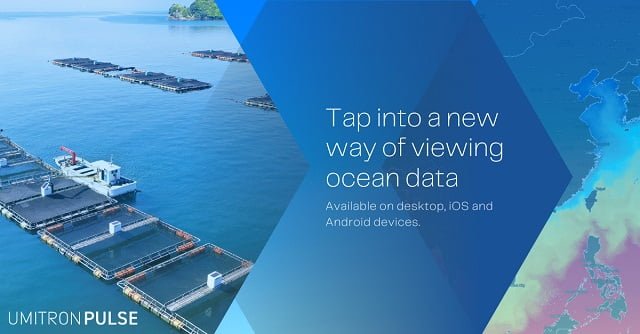
In the realm of aquaculture, satellite data has emerged as a transformative force, shaping the industry’s dynamics and sustainability. At UMITRON, a leading player in this space, the conversation extends beyond the routine discussions of satellite data’s current applications. In this exclusive interview, we delve into the visionary perspective of Ken Fujiwara, UMITRON’s CEO and Co-Founder. He shares insights into UMITRON’s inception, the pivotal role of satellite technology in addressing industry challenges, and his vision for the future where satellites play a central role in sustainable aquaculture.
Ken Fujiwara’s Vision for UMITRON
Q: What inspired you to set up UMITRON?
A: While working as an aerospace engineer developing earth observation satellites and looking at images of Earth, the realisation that our planet is predominantly covered by oceans sparked the idea of contributing to marine environmental conservation and sustainable food production. Our company’s mission is to “install sustainable aquaculture on Earth,” addressing challenges in the aquaculture industry and the marine environment.
Q: What are the primary challenges faced by the aquaculture industry that satellite technology can address?
A: The industry grapples with volatility influenced by water quality, diseases, and market demands. Satellite technology, particularly remote sensing data, offers a solution by monitoring ocean conditions. This data makes aquaculture operations more predictable and repeatable, mitigating risks associated with excess or shortage of harvest, workforce, and feed.
Satellites in Action
Q: How do satellites currently support aquaculture practices?
A: Satellite use and the resulting data have been crucial in providing insights across a few areas in aquaculture, from site selection and environmental assessment to day-to-day farm operations. Aquaculture projects typically start with finding a suitable site for farming, and satellite data is used for mapping coastal areas and checking the surrounding environment. Once this first stage is established, more detailed environmental assessments and decades of historical environmental data can be used to assess suitability for fish, facilities, and operational safety. During farming operations, real-time data and forecasts of critical parameters such as temperature contribute to optimising feed amounts, and oxygen and chlorophyll data support risk mitigations to reduce the mortality rate of fish.
Future Perspective
Q: How do you anticipate satellites evolving to enhance the aquaculture sector in the next 10-20 years?
A: The aerospace industry’s recent and continued shift from one large satellite to multiple small satellite constellations will revolutionise aquaculture. Increased frequency of real-time ocean observation and high-speed internet connectivity in coastal to offshore regions will make operations more predictable, repeatable and accurate. Ultimately, aquaculture operations in remote areas using accurate marine environmental forecasts and enhanced global connectivity will become a reality.
Stay Always Informed
Join our communities to instantly receive the most important news, reports, and analysis from the aquaculture industry.
UMITRON’s Aspirations
Q: Could you elaborate on UMITRON’s overarching goals and the role of satellite technology in achieving them?
A: While human colonisation is possible on other planets in the future, I believe that most of the 10 billion people will continue to live on Earth. UMITRON envisions providing ample food for Earth’s growing population while maintaining healthy oceans through sustainable aquaculture. As we continue our journey on “spaceship Earth,” understanding and responding to global challenges becomes paramount. Satellite technology is instrumental in achieving this goal by offering timely insights into oceanic changes, enabling swift and timely action on a global scale.
In this insightful discussion with Ken Fujiwara, we hope you’ve gained a profound understanding of UMITRON’s unwavering dedication to harnessing satellite technology for a sustainable future in aquaculture. Through the fusion of visionary leadership, state-of-the-art technology, and a mission-centric ethos, we aim to position UMITRON at the forefront of transforming the aquaculture landscape.
Interested in trying PULSE?
At UMITRON, we are passionate about advancing innovation and sustainability in aquaculture. PULSE is a web-based platform integrating data from over 30 satellite sources and buoys worldwide with our AI models to deliver daily insights into ocean conditions across 7 data parameters, including temperature and dissolved oxygen.
PULSE also has an Enterprise tier, where we’ve used up to 30 years of historical data and our AI models for projects such as blue carbon mapping, site spatial planning and risk reporting. Do contact us at joyce.leo@umitron.com or chris.amhoff@umitron.com if you’re interested to find out more.
Editor at the digital magazine AquaHoy. He holds a degree in Aquaculture Biology from the National University of Santa (UNS) and a Master’s degree in Science and Innovation Management from the Polytechnic University of Valencia, with postgraduate diplomas in Business Innovation and Innovation Management. He possesses extensive experience in the aquaculture and fisheries sector, having led the Fisheries Innovation Unit of the National Program for Innovation in Fisheries and Aquaculture (PNIPA). He has served as a senior consultant in technology watch, an innovation project formulator and advisor, and a lecturer at UNS. He is a member of the Peruvian College of Biologists and was recognized by the World Aquaculture Society (WAS) in 2016 for his contribution to aquaculture.




